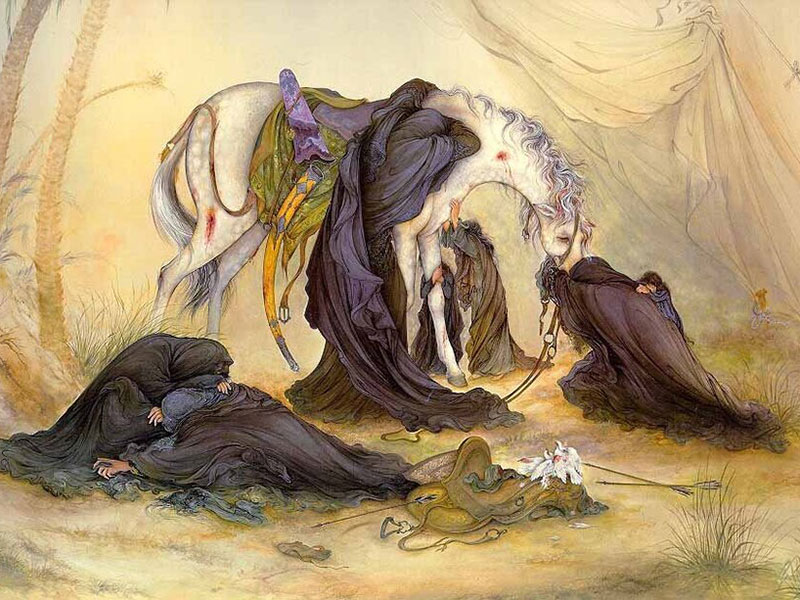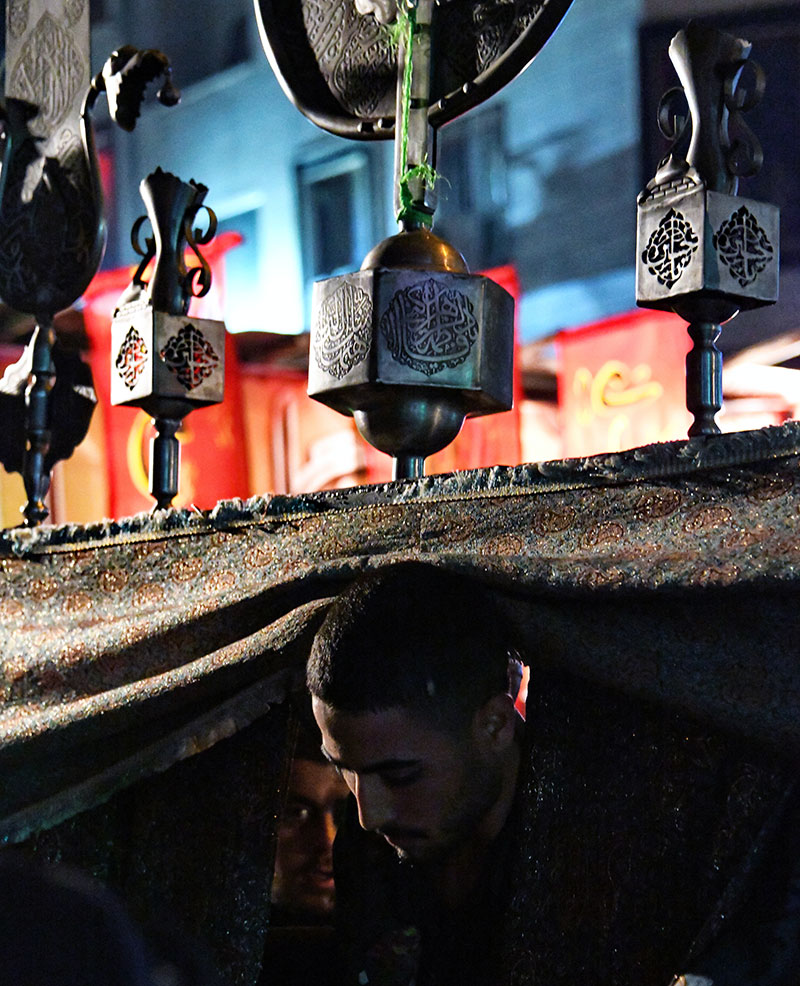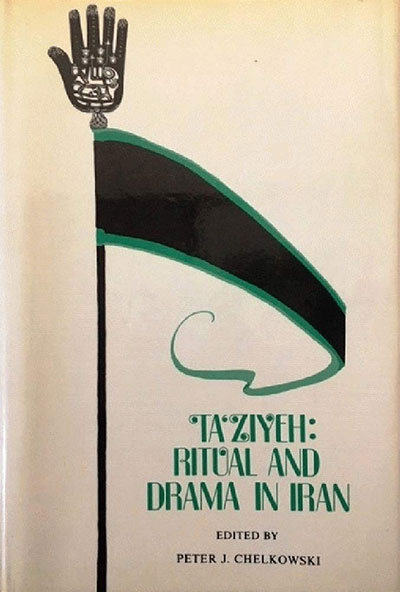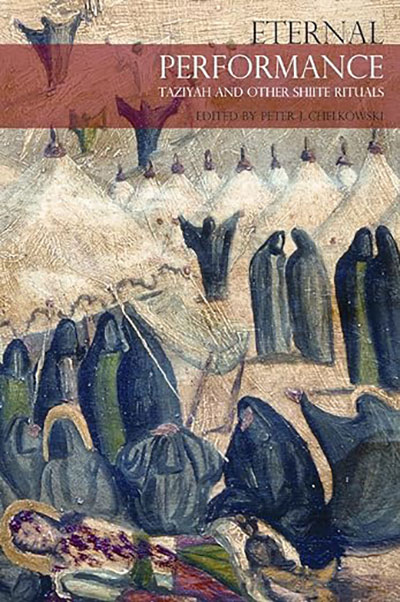Ashura
Ashura celebration in Taft: men carry the monumental symbolic coffin of Imam Hossein. Photograph: ©Patrick Ringgenberg.
“I saw in an isolated Iranian village one of the most powerful things I have ever witnessed in the theater: a group of 400 villagers, the entire population of the place, sitting under the trees and passing bursts of laughter to the complete sobs – although they knew perfectly well the end of the story – when they saw Hossein risking being killed, then fooling his enemies, then martyred. And when he was martyred, the theatrical form became truth.”
This testimony is from Peter Brook (1925-2022), an exceptional man of the theater, who attended in the 1960s the representation of a typically Iranian and Shiite theater: the ta’ziyeh, that is to say the staging ritual and dramatized scene of the martyrdom of Hossein, the third Imam of the Shiites.
At the death of the Prophet Muhammad in 632, Muslims divided: a majority of believers elected Abu Bakr as the first caliph, leader of Muslims and leader of prayer, while a minority, the “Shiites”, seceded, claiming that the true successor of the Prophet can only be Ali, who had married the Prophet’s daughter, Fatima. Ali became the fourth of the four Sunni caliphs, after Abu Bakr, Omar and Uthman, but for the Shiites he became the first of the Imams, both spiritual master and true heir of the Muslim Revelation. Fatima and Ali had two sons, Hassan and Hossein, respectively 2nd and 3rd Imam.

A ta’ziyeh: the camp of Imam Hossein and his family is burned by Umayyad soldiers (dressed in red). Photograph: ©Payam Moein (Wikimedia).

“The evening of Ashura”: a famous painting by Mahmud Farshchian (1977), representing the weeping women around Hossein’s horse, which returned to the camp without its rider, dead. Image source: ©Tehran Times.
In 680, Hossein was massacred with his companions in Karbala (Iraq) by an army of the Umayyads, an Arab dynasty – the first in the Muslim world – ruling from Damascus. For the Shiites, this tragedy became the symbol of martyrdom, of the sacrifice of the innocent for a spiritual cause. Very quickly, Hossein’s tomb was venerated, and processions organized to commemorate his martyrdom. A few centuries later, during the Qajar period (19th century) or even before, the events of Karbala became the subject of a sacred theater, analogous to the Christian Passions which can still be seen in Spain or South America. South. In the open air or in a specially designed place (the tekyeh), actors in costumes recreate, in a more or less elaborate setting (tents, animals, palm trees, etc.), the last days of the life of Hossein and his family, reciting texts written in advance, in a more or less elaborate setting. In the Muslim world, which has not developed a theatrical art, the ta’ziyeh are the only typically Islamic theater, deeply rooted in Shiite culture and spirituality, and which is not only a representation: it is the ritual restitution of a founding tragedy for Shiite consciousness.
The ta’ziyeh are part of a series of commemorations taking place during the first ten days of the Arab month of Muharram. Every day, men parade in procession, ritually flagellating themselves to the rhythm of drums, or carrying huge banners. Everywhere, booths are set up, where tea, syrup and pastries are offered to people. The 10th of the month of Muharram is Ashura: the day of the Karbala massacre. This day, men carry an immense wooden structure, the nakhl, which symbolizes Hossein’s coffin. In the evening, the faithful light candles and the Muharram commemorations end with this funeral vigil.

A banner bearer during a muharram procession in Tehran. Photograph: ©Patrick Ringgenberg.
For those who would like to live an intense theatrical and spiritual experience, the commemorations of Muharram and Ashura are unmissable and unforgettable. Celebrations take place throughout the country (except in Sunni areas), but some places are more famous than others, such as the city of Yazd and surrounding villages. As the date of Ashura is determined by the Arabic calendar, the dates of commemorations vary throughout the year. In 2025, 1-10 Muharram will correspond to June 27-July 6; in 2026, June 17-26; in 2027, June 7-16; etc.
To learn more about ta'ziyeh, here are two classic books (in English) and an Iranian television documentary (in Persian with English subtitles):

